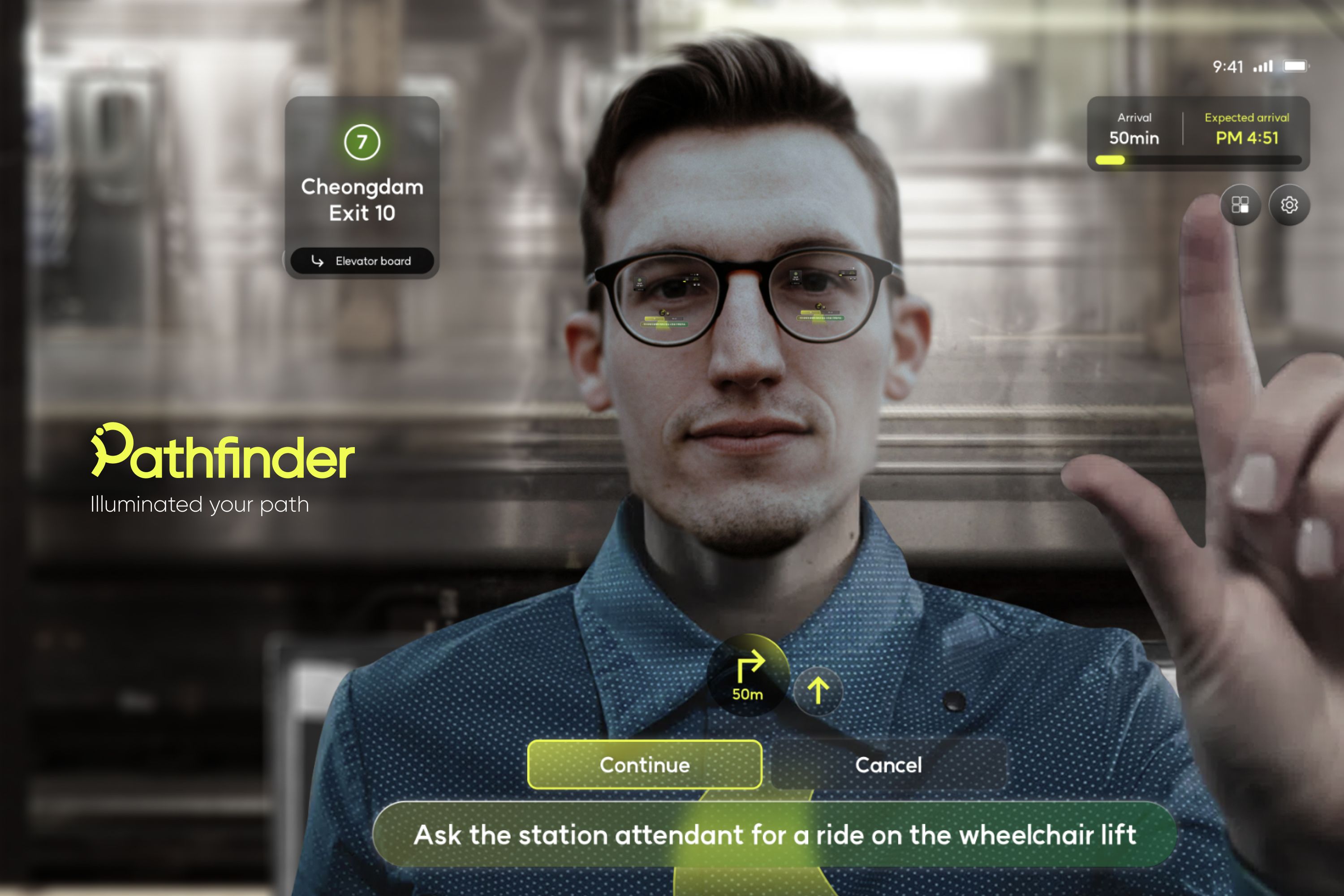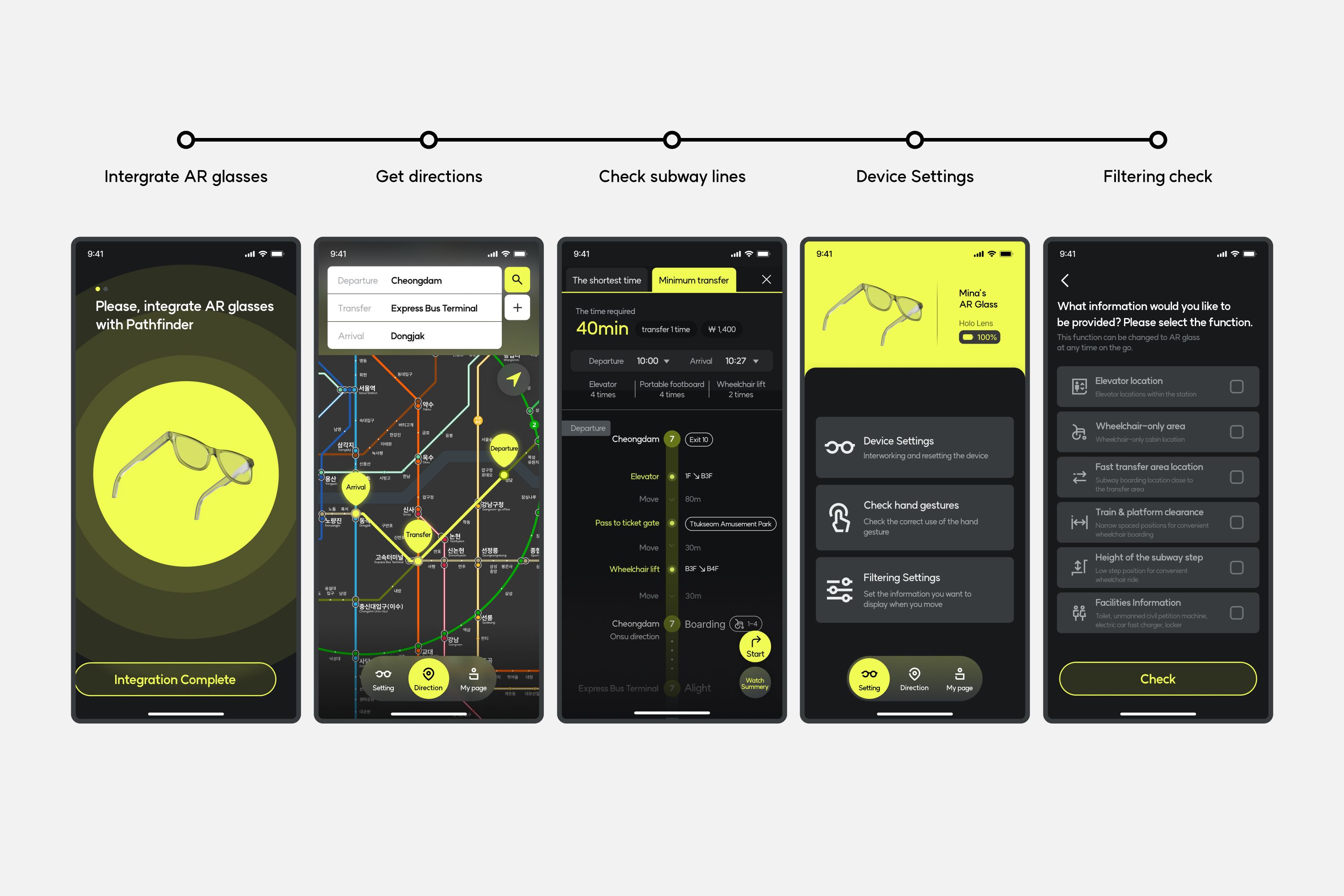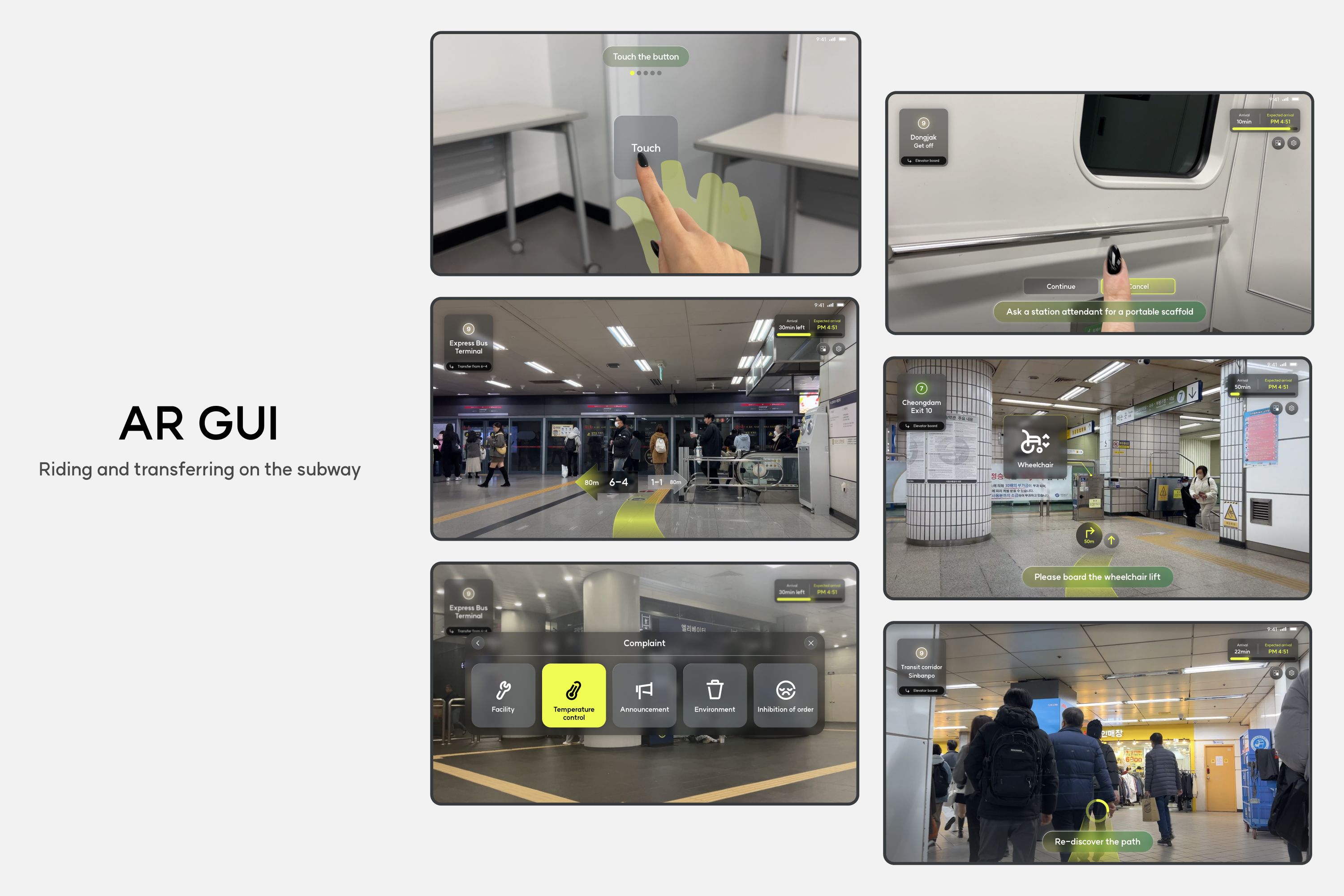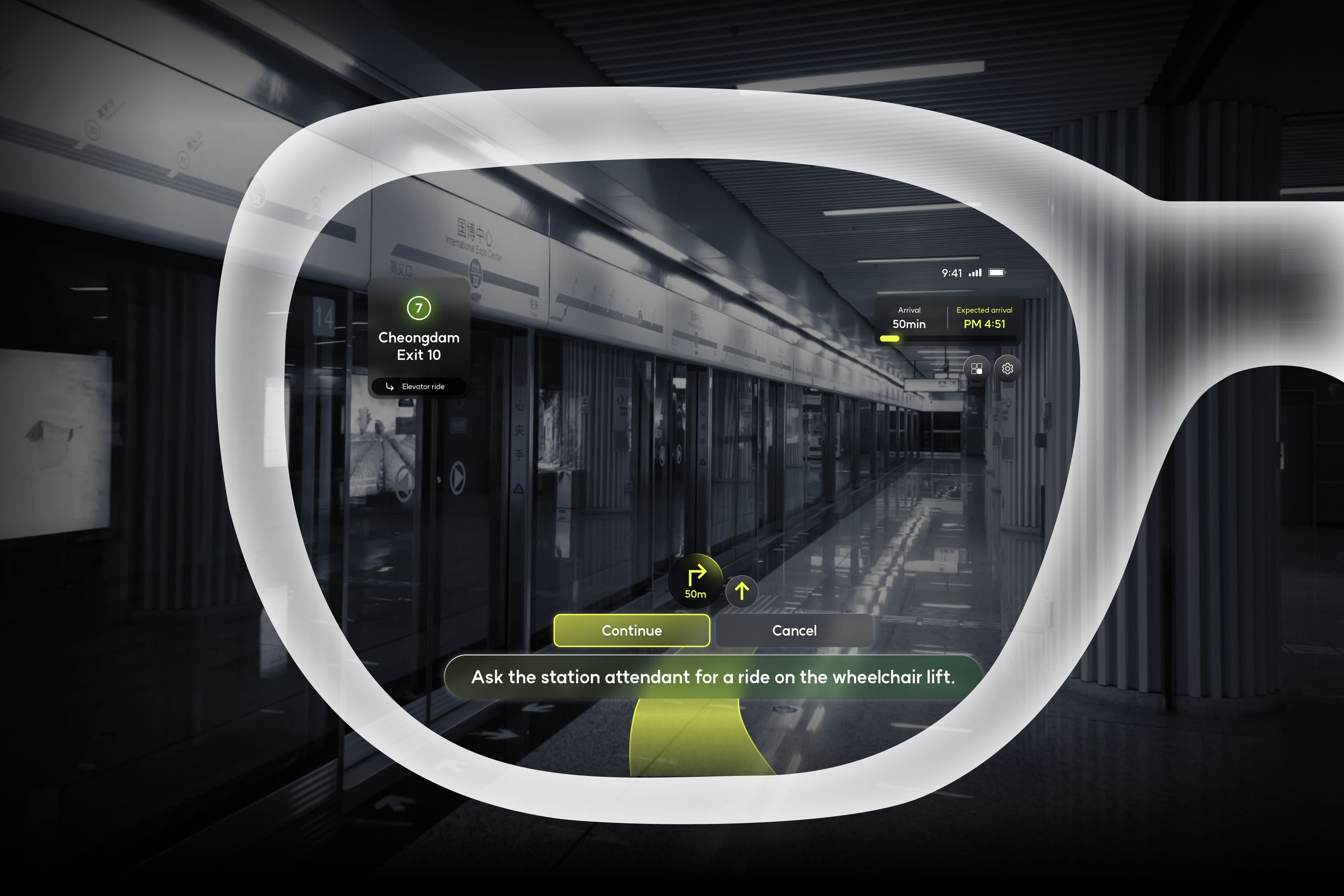
Designers
Ujeong Ko, Youngsun Roh, Hyejeong Son, Chaewon Lee
Year
2024
Category
New Talent
Country
Korea, Republic
School
Sookmyung Women's University
Teacher
Yumi Na
»Pathfinder exemplifies design thinking to leverage emerging technologies for aiding those with mobility issues. It benefits not only wheelchair users but also the elderly, parents with strollers, and those carrying heavy objects. Initially focused on Seoul’s subway stations, the concept has broader potential for public transport systems globally. The project’s strength lies in its empathetic, user-centered design approach throughout its development and final outcome. It effectively incorporates novel technology, demonstrating how augmented reality and different interface methods can enhance accessibility.«
Michelle Castañeda and Sofia Ryan
And the award goes to...

Three questions for the project team
What was the particular challenge of the project from a UX point of view?
As AR technology advances, it has the potential to improve the daily lives of the socially disadvantaged. For wheelchair users, subway travel in Korea takes about 3 times longer than for pedestrians. To ensure their precious time is not wasted, the solution aims to provide quick and efficient usability for wheelchair users through AR glasses, despite their mobility challenges. People in Korea generally seek quick and convenient usage. However, wheelchair users are often excluded due to their mobility issues. Therefore, we designed a user scenario where AR glasses can enable wheelchair users to conveniently use the Korean subway, with timing close to pedestrians when the technology is commercialized.
What was your personal highlight in the development process? Was there an aha!-moment, was there a low point?
The main focus of Pathfinder's development was to improve the user experience. We aimed to address issues through user interviews and field studies. Specifically, we designed an intuitive UI to solve the difficulties wheelchair users face in finding accessible locations and the long waiting times to meet station staff required for boarding wheelchair lifts. By improving initial design issues through user testing, we achieved satisfaction by making it easier for users to navigate the subway in Korea. Additionally, through trial and error, we overcame challenges related to the environment and systems of Korean subway stations. This process underscored the importance of user-centered design and continuous improvement based on user feedback.
Where do you see yourself and the project in the next five years?
Over the next 5 years, AR technology is expected to advance dramatically, with AR glasses becoming commonplace and widely used in real life. In addition, indoor mapping technology and geolocation technology will improve significantly in accuracy, allowing users to instantly check for elevator breakdowns or congested areas in subways and platforms in real time. This will also be a positive social change. Wheelchair users in South Korea will be able to increase their independence and feel less anxious and more confident about using public transportation. Furthermore, these technological advances will increase safety and reduce social risk factors, improving the safety and comfort of society as a whole.


